THE BEST TIP I CAN PASS ON TO BEGINNER WRITERS:
 Writing a novel is a huge undertaking. There are many things that go into the writing of a fiction story. The best tip I can pass on is this: Break everything down into little bite-sized pieces. By doing this, you can reduce a huge project down to do-able portions that can be done whether you have 2 hours a week to write or two full days! It only requires a little planning and organization.
Writing a novel is a huge undertaking. There are many things that go into the writing of a fiction story. The best tip I can pass on is this: Break everything down into little bite-sized pieces. By doing this, you can reduce a huge project down to do-able portions that can be done whether you have 2 hours a week to write or two full days! It only requires a little planning and organization.
ALL NOVELS REQUIRE SOME SUSPENSE:
Regardless of what type of novel you choose to write, all stories require at least a semblance of suspense. Suspense is what hooks the reader into the story, and it is what pulls the reader along the story and keeps them reading. Suspense creates a question the reader desires an answer to. The greater the suspense, the more hooked the reader will be.
READING OTHER AUTHORS:
 It’s important to keep reading as your own journey as a writer continues. Each author has a different style and uses different storytelling techniques. The stories don’t even have to be great. You can learn from the good, the bad and the bland. Just analyzing what made a book bland is a great lesson in itself. Did the story need more action? Did the story get stuck somewhere?
It’s important to keep reading as your own journey as a writer continues. Each author has a different style and uses different storytelling techniques. The stories don’t even have to be great. You can learn from the good, the bad and the bland. Just analyzing what made a book bland is a great lesson in itself. Did the story need more action? Did the story get stuck somewhere?
When I read novels now, I can usually tell whether the author is a pantser or a plotter. If the story sags in the third section, I can tell the author got caught in part two of the three-act structure.
The books I read now are twice as enjoyable because I experience them as a reader but as an author too. I get to enjoy the story itself but also watch and learn the author’s storytelling techniques too.
WATCHING MOVIES FOR INSPIRATION:
When I am in the process of writing my own novels, I tend to read less because I’m reading and proofreading my own pages. During these times, I like to vegetate by getting lost in a movie. I watch movies specifically to learn from them. Believe me, you can learn a lot about the actual storytelling craft from watching movies. They can also be a source of inspiration for your own stories.
It took me almost a year to come up with my first story for a novel. One full year. I didn’t know where to start. I had ideas, but didn’t know how to brainstorm them into a potential story.
WHERE CAN DO YOU GET IDEAS FOR A FICTION STORY FROM?
Ideas for stories in the beginning will come from TV movies, Cinema movies 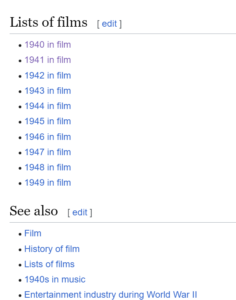 or other books you read. Reading other authors is crucial no matter where you are on the writing spectrum. However, when you’re new, you can learn a lot from watching mystery or crime noir movies. I like movies from the 1940s, 1950s, and 1960s. The movies in these decades didn’t have CGI and the directors had to use the stage to tell the story. They used wider shots and props to assist the storytelling. By watching these older movies, you can learn a lot regarding writing.
or other books you read. Reading other authors is crucial no matter where you are on the writing spectrum. However, when you’re new, you can learn a lot from watching mystery or crime noir movies. I like movies from the 1940s, 1950s, and 1960s. The movies in these decades didn’t have CGI and the directors had to use the stage to tell the story. They used wider shots and props to assist the storytelling. By watching these older movies, you can learn a lot regarding writing.
The movies of today show the location scenes once and then do close up shots of one character talking and then follow it up with another close-up shot of a character talking. There’s not that much to learn about storytelling from these movies. It’s a shame because the sets are absolutely gorgeous, especially in the fantasy movies.
To the left (or above) is a screenshot of the Wikipedia page that comes up when you search “1940 in film”. This will give you all of the films and a tiny synopsis of what the films are about. You can pick whatever decade appeals to you.
READ THE SYNOPSIS FOR THE MOVIE FIRST:
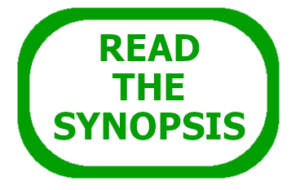 It’s a good idea to read the synopsis before you view the movie. Knowing at least a basic outline of the story will allow you to absorb more as an author. If you go into the movie blindly, you will be “experiencing the movie” as a viewer only. By knowing ahead of time what story will be unfolding, it will allow you to watch specifically for certain scenes to unfold. You can watch what tools are used to move the story along.
It’s a good idea to read the synopsis before you view the movie. Knowing at least a basic outline of the story will allow you to absorb more as an author. If you go into the movie blindly, you will be “experiencing the movie” as a viewer only. By knowing ahead of time what story will be unfolding, it will allow you to watch specifically for certain scenes to unfold. You can watch what tools are used to move the story along.

For example: Notice in the scenes how much information is passing to the viewer by the setting. Besides the timeline of when the story is taking place, it often will give you shots of recognizable icons from certain cities. There are so many techniques you can learn from watching these older movies about all of the tools used to lay out the facts of the story and how suspense is created. Below is a list of things to watch for in stories:
- How does the movie show the location of the story? Do they use icons, or text on the screen? Do they use snippets of dialogue? Each movie you will learn different tricks for showing time and location.
- How does the story show either poverty or opulence?
- How does the movie present the premise? There will be at least dialogue about what the main character wants or needs. Notice how this is done.
- Notice where the suspense of the story starts. Even in non-mystery stories, there will be at least a thread of suspense. It might be suggested by a vision that one character and the viewer see and no one else does. Or it may be a little gossip that passes in a short conversation.
- Notice how the passage of time is handled. Is the passage of a few years spoken in dialogue or is it projected in some other way?
- Notice how the writers show the character’s weakness or fallen nature.
- Notice the change in locations in the story. This is often how the story is kept moving forward.
- Notice when the suspense gets stronger.
- Watch for how the writers will use lies to create a sense of worry or dread.
- For any twists in the story, notice how abrupt it happens. Also take the time to notice if this was foreshadowed in the beginning of the story. Readers love foreshadowing.
MY SUGGESTION FOR A MOVIE:
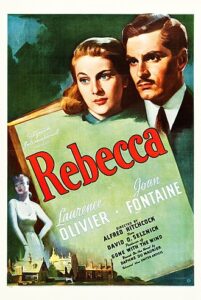 If you are looking for a suggestion, I would suggest Rebecca for the first movie. This movie was directed by Alfred Hitchcock and it has a lot of gothic atmosphere. There is also a psychological plotline in this story so it is a goldmine for learning storytelling tools.
If you are looking for a suggestion, I would suggest Rebecca for the first movie. This movie was directed by Alfred Hitchcock and it has a lot of gothic atmosphere. There is also a psychological plotline in this story so it is a goldmine for learning storytelling tools.
Most of the synopses on Wikipedia give you an outline of the story but they don’t have spoilers in them. Sometimes I only read about six paragraphs on the really long ones because the purpose is only to know a little bit about what the story will be about so you can watch for how things are handled on film. You can easily translate any of these tools to novel writing.
GOTHIC MOVIES: Gothic movies are great at showing how to introduce fear and suspense into a story. They are also a great place to learn how to use the atmosphere and the location and backdrops to add to the suspense.
FILM NOIR: These movies are great to learn character development. Film Noir is usually about all fallen characters. In other words, they are all sinners, but some characters are bigger sinners than others. This is a great way to learn how to craft a fallen
LONG SERIES: These are great to learn about how the location and things in the room or backdrop help to relay the story. You can learn a lot about the passage of time, how flashbacks are handled, how to introduce new characters in preparation to take the story in a new direction. Miniseries like Downton Abbey and other miniseries are a great place to learn about what is going on.
MELODRAMA: Melodrama has fallen out of favor in recent times, but I personally think it needs a comeback. You can learn about melodrama from old world soap operas. I think the only one I can think of is Dallas. It’s on either Amazon Prime or somewhere else you can watch it. These types of shows are good for showing how to blend romance, cheating, and other emotional scenes into the story.
You don’t have to commit to watching the entire soap opera. You can learn a lot about storytelling tools by watching only a few shows.
Blow is a copy of the entire Brainwashing Sheet I referred to above. You can read the blog post about how to use it here.
And you can sign in to download your copy of the sheets below:

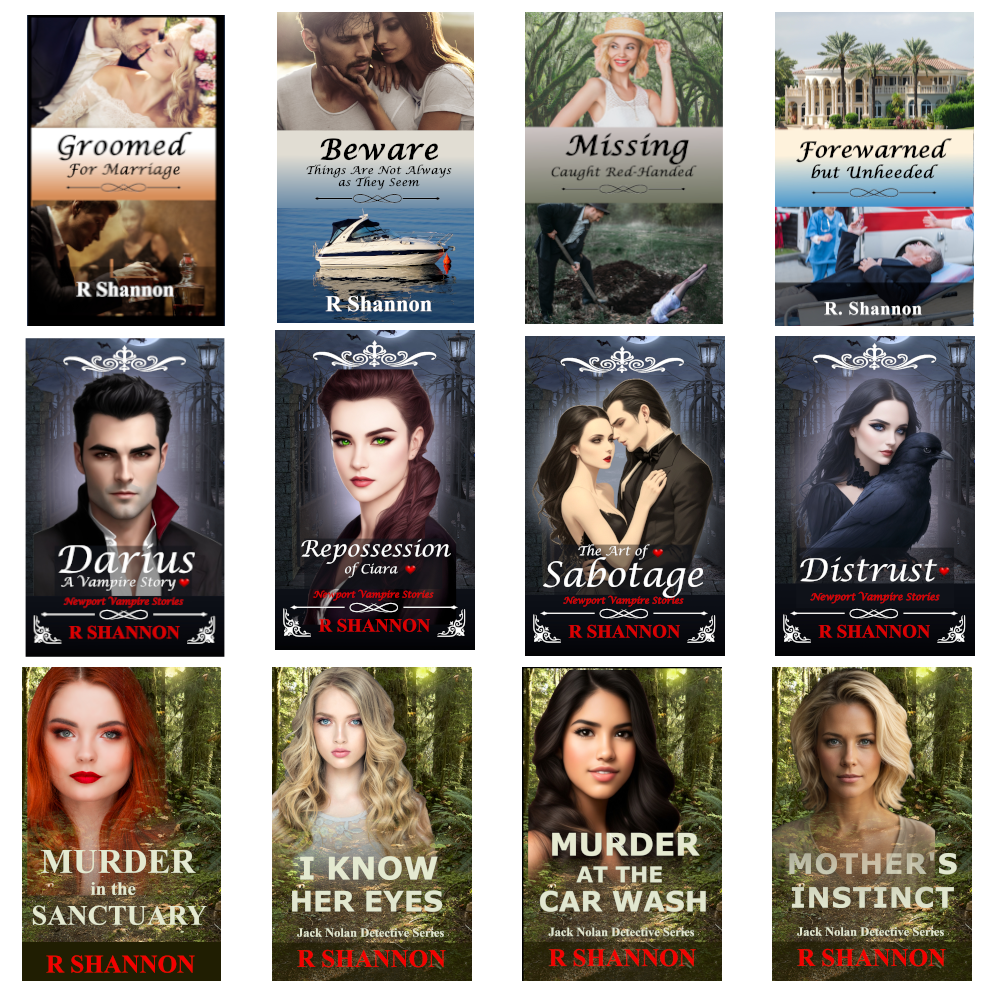 I didn’t set off to write a book series. How did it happen? My first novel turned out to be way too long and there was way too much going on. So I broke it down and wrote two separate stories.
I didn’t set off to write a book series. How did it happen? My first novel turned out to be way too long and there was way too much going on. So I broke it down and wrote two separate stories.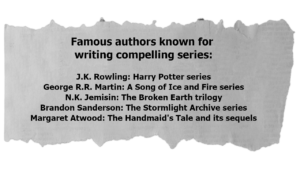 I found out later that more experienced authors even suggested that newer authors consider writing in series because it’s easier to market the books. But my venture into writing book series was a happy accident.
I found out later that more experienced authors even suggested that newer authors consider writing in series because it’s easier to market the books. But my venture into writing book series was a happy accident.
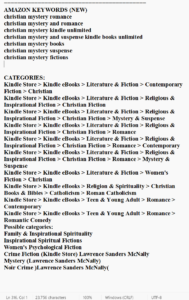
 I use broad-stroke character arc for the main characters that extends over all the books in the series. Each individual book, however, the character grows and changes a little bit. So each book contains its own arc, but there is a longer series arc for the main characters. It helps to know this before you start writing the series.
I use broad-stroke character arc for the main characters that extends over all the books in the series. Each individual book, however, the character grows and changes a little bit. So each book contains its own arc, but there is a longer series arc for the main characters. It helps to know this before you start writing the series.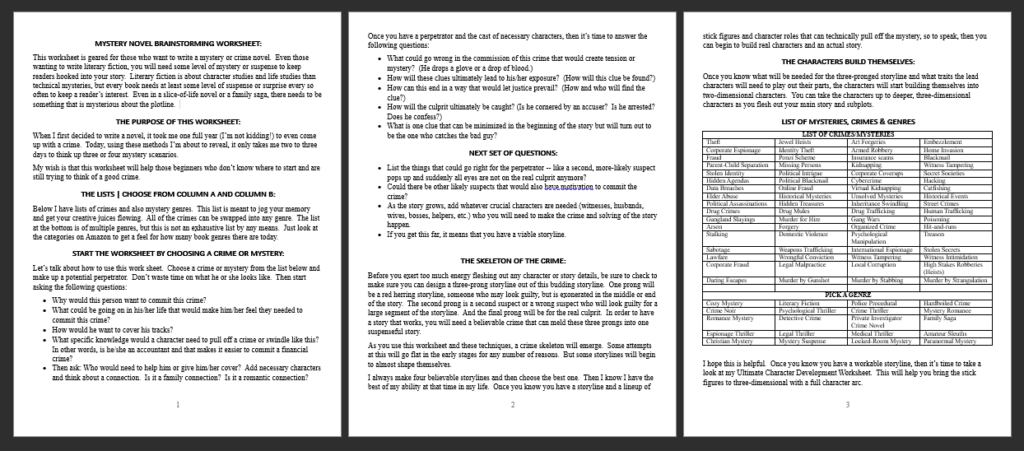
 When I first decided to write a novel, it took me one full year (I’m not kidding!) to even come up with a crime. Today, using these methods I’m about to reveal, it only takes me two to three days to think up three or four mystery scenarios.
When I first decided to write a novel, it took me one full year (I’m not kidding!) to even come up with a crime. Today, using these methods I’m about to reveal, it only takes me two to three days to think up three or four mystery scenarios.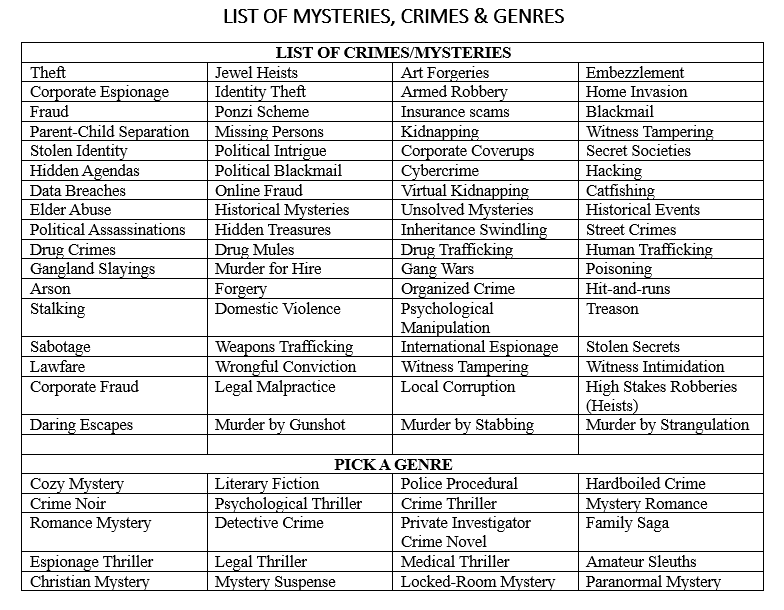
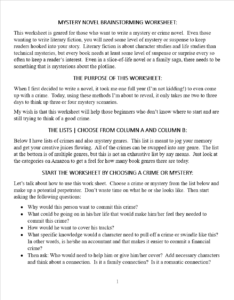 Let’s talk about how to use this work sheet. Choose a crime or mystery from the list below and make up a potential perpetrator. Don’t waste time on what he or she looks like. Then start asking the following questions:
Let’s talk about how to use this work sheet. Choose a crime or mystery from the list below and make up a potential perpetrator. Don’t waste time on what he or she looks like. Then start asking the following questions: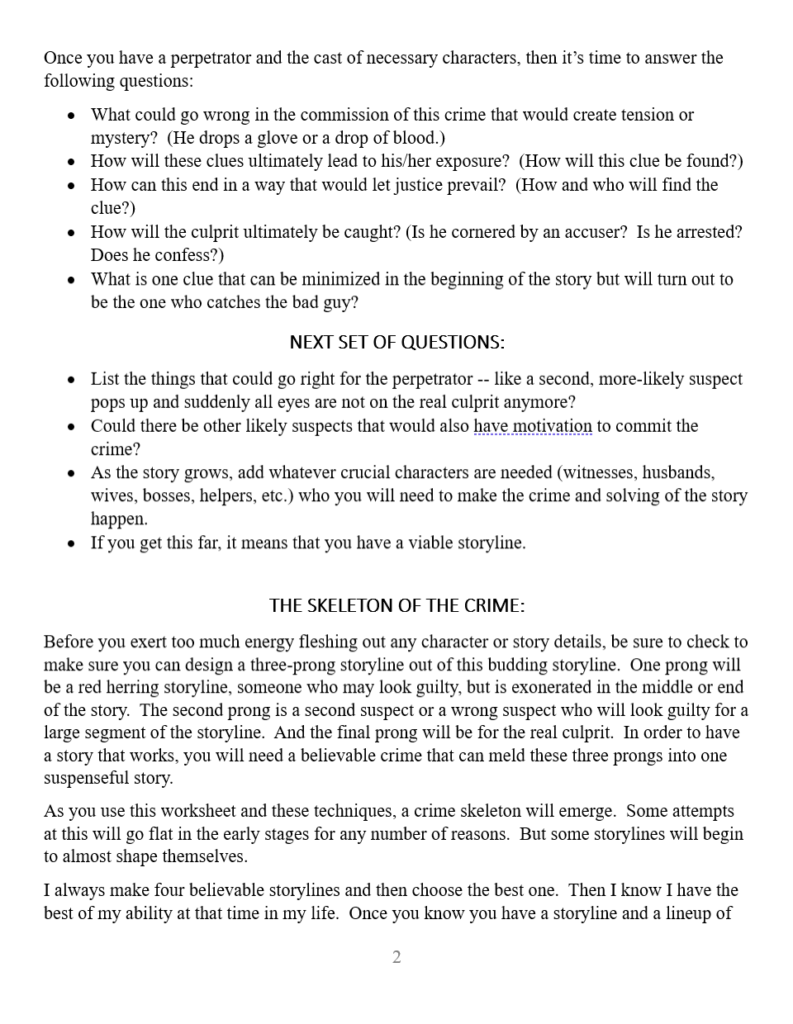 Once you have a perpetrator and the cast of necessary characters, then it’s time to answer the following questions:
Once you have a perpetrator and the cast of necessary characters, then it’s time to answer the following questions: Before you exert too much energy fleshing out any character or story details, be sure to check to make sure you can design a three-prong storyline out of this budding storyline. One prong will be a red herring storyline, someone who may look guilty, but is exonerated in the middle or end of the story. The second prong is a second suspect or a wrong suspect who will look guilty for a large segment of the storyline. And the final prong will be for the real culprit. In order to have a story that works, you will need a believable crime that can meld these three prongs into one suspenseful story.
Before you exert too much energy fleshing out any character or story details, be sure to check to make sure you can design a three-prong storyline out of this budding storyline. One prong will be a red herring storyline, someone who may look guilty, but is exonerated in the middle or end of the story. The second prong is a second suspect or a wrong suspect who will look guilty for a large segment of the storyline. And the final prong will be for the real culprit. In order to have a story that works, you will need a believable crime that can meld these three prongs into one suspenseful story. As you use this worksheet and these techniques, a crime skeleton will emerge. Some attempts at this will go flat in the early stages for any number of reasons. But some storylines will begin to almost shape themselves.
As you use this worksheet and these techniques, a crime skeleton will emerge. Some attempts at this will go flat in the early stages for any number of reasons. But some storylines will begin to almost shape themselves.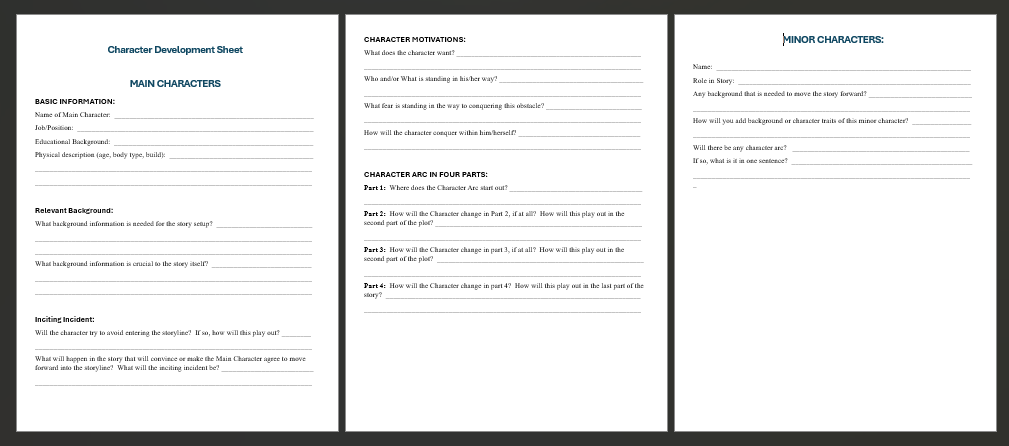
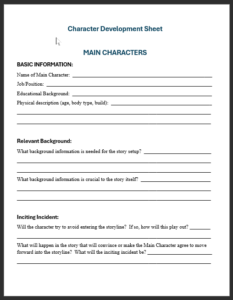 When I started writing several years ago, I came across the standard character worksheet and it focused mostly on physical attributes, occupation but there was a disconnect regarding their role in the storyline, which is the most important part.
When I started writing several years ago, I came across the standard character worksheet and it focused mostly on physical attributes, occupation but there was a disconnect regarding their role in the storyline, which is the most important part.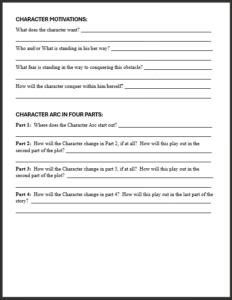 As a newbie, it took me awhile to remember that a character needs to have an arc over the storyline. So it’s important — and time saving — to know what that arc will be before you even begin the draft. This character sheet can help you find this so you know where you are starting from and where you want to end up. The following questions should help you focus on what this character arc will be:
As a newbie, it took me awhile to remember that a character needs to have an arc over the storyline. So it’s important — and time saving — to know what that arc will be before you even begin the draft. This character sheet can help you find this so you know where you are starting from and where you want to end up. The following questions should help you focus on what this character arc will be: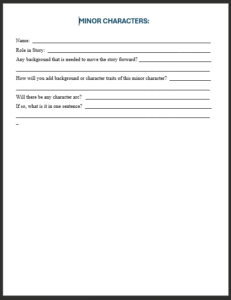 For minor characters, you only need to answer a few questions. It helps to know what role these minor characters will play and what, if any, background information is needed to support them in the storyline:
For minor characters, you only need to answer a few questions. It helps to know what role these minor characters will play and what, if any, background information is needed to support them in the storyline: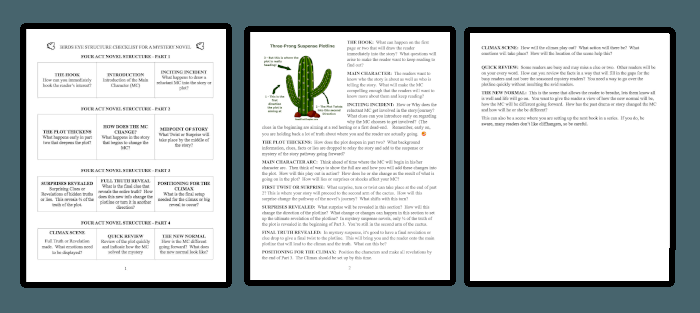
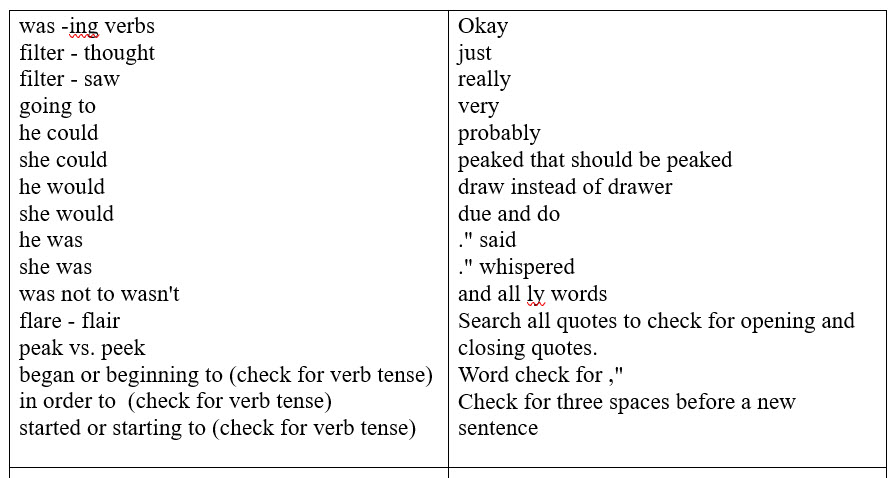
 Yes, a tax lien on a company is a public record. This means that anyone can search for and view the lien, including potential creditors, investors, and the general public. The lien will typically be filed with the county recorder’s office in the county where the company is located.
Yes, a tax lien on a company is a public record. This means that anyone can search for and view the lien, including potential creditors, investors, and the general public. The lien will typically be filed with the county recorder’s office in the county where the company is located. The purpose of a tax lien is to give the government a legal claim on the company’s assets if the company fails to pay its taxes. The lien will remain in effect until the taxes are paid in full.
The purpose of a tax lien is to give the government a legal claim on the company’s assets if the company fails to pay its taxes. The lien will remain in effect until the taxes are paid in full. If you are interested in finding out if a company has a tax lien, you can search the public records for the county where the company is located. You can also contact the Internal Revenue Service (IRS) to see if they have a lien on the company.
If you are interested in finding out if a company has a tax lien, you can search the public records for the county where the company is located. You can also contact the Internal Revenue Service (IRS) to see if they have a lien on the company. Here are some of the reasons why someone (or a detective) might want to know if a company has a tax lien:
Here are some of the reasons why someone (or a detective) might want to know if a company has a tax lien: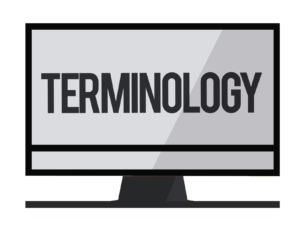 Sometimes just having an overview of how things work can help you thicken the plot or add some details that will enrich the story. Below are some words and definitions that surround the subject of Tax Liens:
Sometimes just having an overview of how things work can help you thicken the plot or add some details that will enrich the story. Below are some words and definitions that surround the subject of Tax Liens: A gun silencer, also known as a suppressor, is a muzzle device that reduces the sound of a gunshot. It does this by slowing down and cooling the expanding gases that are released from the barrel when the gun is fired. Silencers do not completely silence a gunshot, but they can reduce the sound level by 20 to 30 decibels. This can make a significant difference in the loudness of the gunshot, making it much less noticeable to people nearby.
A gun silencer, also known as a suppressor, is a muzzle device that reduces the sound of a gunshot. It does this by slowing down and cooling the expanding gases that are released from the barrel when the gun is fired. Silencers do not completely silence a gunshot, but they can reduce the sound level by 20 to 30 decibels. This can make a significant difference in the loudness of the gunshot, making it much less noticeable to people nearby. A ballistic report is a record of the characteristics of a bullet, such as its caliber, weight, and velocity. Ballistic reports are used by law enforcement to identify the type of gun that was used in a crime. They can also be used to determine the range from which a shot was fired.
A ballistic report is a record of the characteristics of a bullet, such as its caliber, weight, and velocity. Ballistic reports are used by law enforcement to identify the type of gun that was used in a crime. They can also be used to determine the range from which a shot was fired.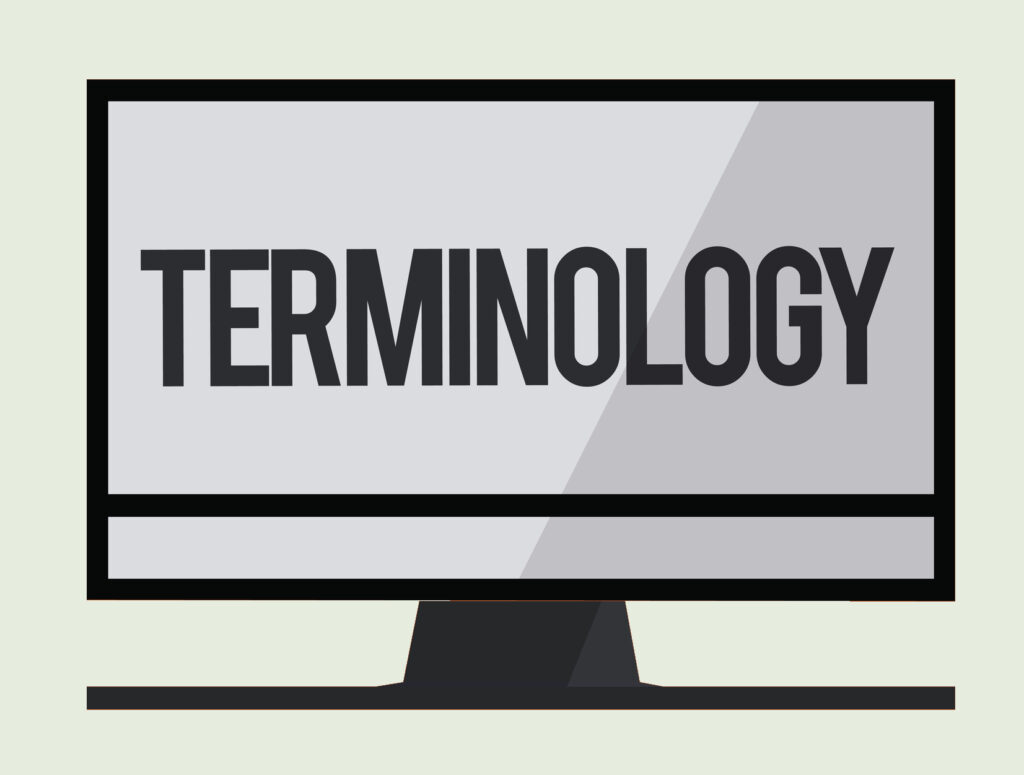 Here are some of the terms that are commonly used in the field of gun silencers and ballistics:
Here are some of the terms that are commonly used in the field of gun silencers and ballistics: A silencer can leave markings on a bullet. These markings are called “tool marks” and they are caused by the rough interior surface of the silencer rubbing against the bullet as it passes through. The tool marks can be microscopic or macroscopic, depending on the type of silencer and the type of bullet.
A silencer can leave markings on a bullet. These markings are called “tool marks” and they are caused by the rough interior surface of the silencer rubbing against the bullet as it passes through. The tool marks can be microscopic or macroscopic, depending on the type of silencer and the type of bullet. Ballistics experts can use these tool marks to identify the silencer that was used in a shooting. They can also use the tool marks to determine the distance from which the shot was fired.
Ballistics experts can use these tool marks to identify the silencer that was used in a shooting. They can also use the tool marks to determine the distance from which the shot was fired.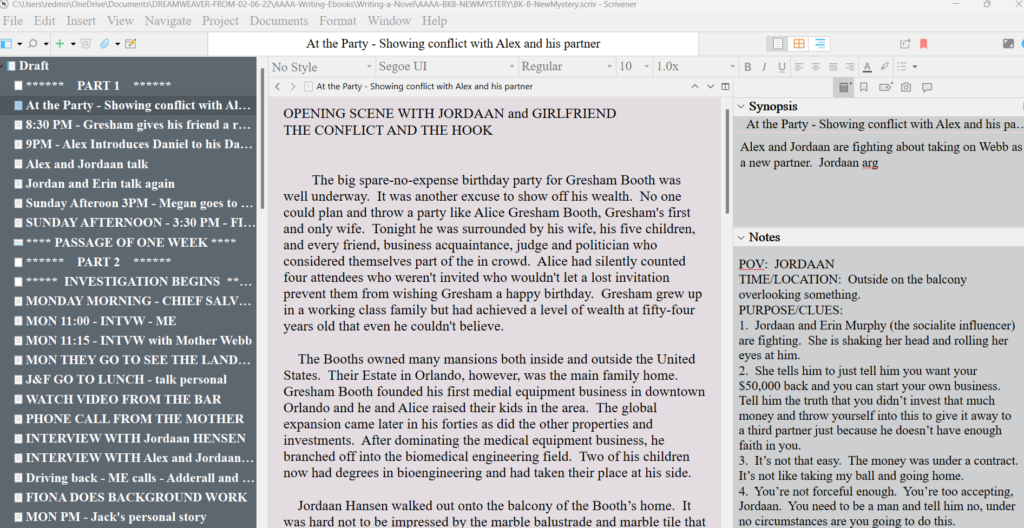 I am knee-deep in Level 4 of writing the next book in the Jack Nolan Detective Series. I thought this would be a good time for me to take a break and reflect on what happens when I’m ‘in the weeds’ writing a novel.
I am knee-deep in Level 4 of writing the next book in the Jack Nolan Detective Series. I thought this would be a good time for me to take a break and reflect on what happens when I’m ‘in the weeds’ writing a novel. When you first sit down to write a novel, everyone is filled with enthusiasm and creative energy. It’s exciting. It’s new. But as the manuscript begins to grow, before it feels finished — or even ready to be polished, it feels cumbersome, heavy, and overwhelming. At least for me it does.
When you first sit down to write a novel, everyone is filled with enthusiasm and creative energy. It’s exciting. It’s new. But as the manuscript begins to grow, before it feels finished — or even ready to be polished, it feels cumbersome, heavy, and overwhelming. At least for me it does. Writers block is another common problem among authors. This often sets in after that initial period of excitement about the novel wears off. At some point the writing of the novel shifts into a project requiring some heavy lifting. There’s always a phase or two where the author has to tough it out. We have to keep at it.
Writers block is another common problem among authors. This often sets in after that initial period of excitement about the novel wears off. At some point the writing of the novel shifts into a project requiring some heavy lifting. There’s always a phase or two where the author has to tough it out. We have to keep at it.
 Will my readers like the book? Will the book be good enough to get a literary agent? What happens if my book gets bad reviews? There are any number of fears of rejection that can cause us to stop writing. Decide ahead of time you won’t allow these fears to stop you. Like I said earlier, think of your writing as a mission God has given you. This is your life’s work, along with your other worldly responsibilities. Your writing could be an opportunity to pass on things you have come to learn in your life. That’s a purpose. Or maybe writing is a way for you to share the gift of storytelling that you know you were born with. That’s a God-given purpose. Whatever the reason, it’s important to not allow fear of rejection to get in the way.
Will my readers like the book? Will the book be good enough to get a literary agent? What happens if my book gets bad reviews? There are any number of fears of rejection that can cause us to stop writing. Decide ahead of time you won’t allow these fears to stop you. Like I said earlier, think of your writing as a mission God has given you. This is your life’s work, along with your other worldly responsibilities. Your writing could be an opportunity to pass on things you have come to learn in your life. That’s a purpose. Or maybe writing is a way for you to share the gift of storytelling that you know you were born with. That’s a God-given purpose. Whatever the reason, it’s important to not allow fear of rejection to get in the way. Distractions are one of the biggest obstacles to completing a novel. One reason is because life does serve up constant small and big emergencies that have to take first priorities in our lives. So an emergency distraction can throw a whole well-planned writing schedule up into the air in a heartbeat.
Distractions are one of the biggest obstacles to completing a novel. One reason is because life does serve up constant small and big emergencies that have to take first priorities in our lives. So an emergency distraction can throw a whole well-planned writing schedule up into the air in a heartbeat. Most novels require at least some research. The internet can be a blessing with research but it can also be a curse. It’s a blessing because the days of having to travel to a public library are over. It can be a curse because the research can suck you in and you can use up all your valuable writing time doing too much research.
Most novels require at least some research. The internet can be a blessing with research but it can also be a curse. It’s a blessing because the days of having to travel to a public library are over. It can be a curse because the research can suck you in and you can use up all your valuable writing time doing too much research. Another trap to finishing a novel is to get caught up in a never-ending edit of the book. This usually hooks in with perfectionism problem in some way.
Another trap to finishing a novel is to get caught up in a never-ending edit of the book. This usually hooks in with perfectionism problem in some way.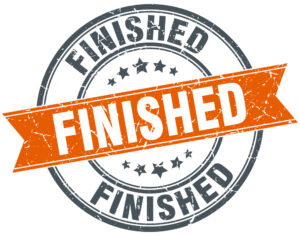 Once you complete a novel, there is a little sadness that sets in. This book is no longer your baby. It’s no longer your little pet project. Once you hand it off to an editor, it becomes a shared work, so to speak.
Once you complete a novel, there is a little sadness that sets in. This book is no longer your baby. It’s no longer your little pet project. Once you hand it off to an editor, it becomes a shared work, so to speak.